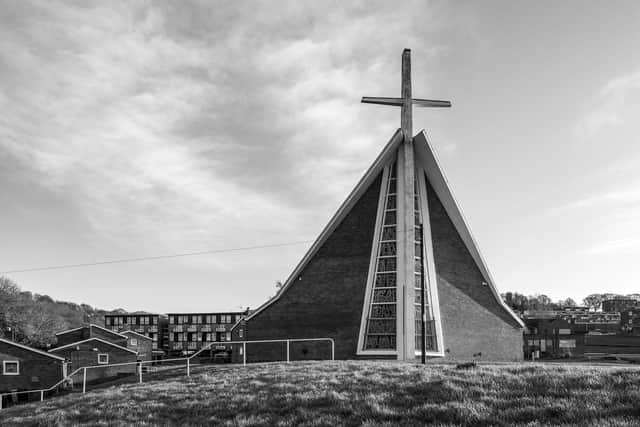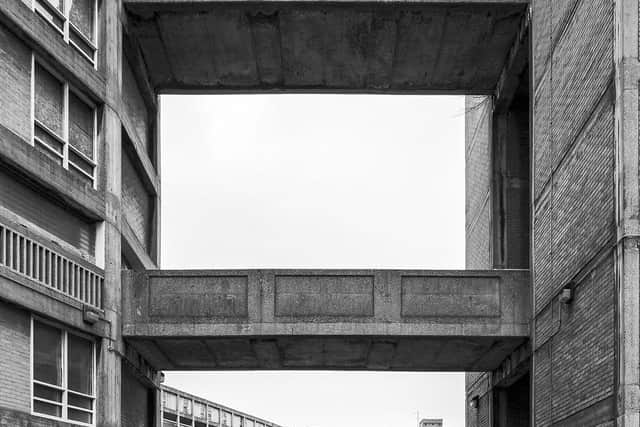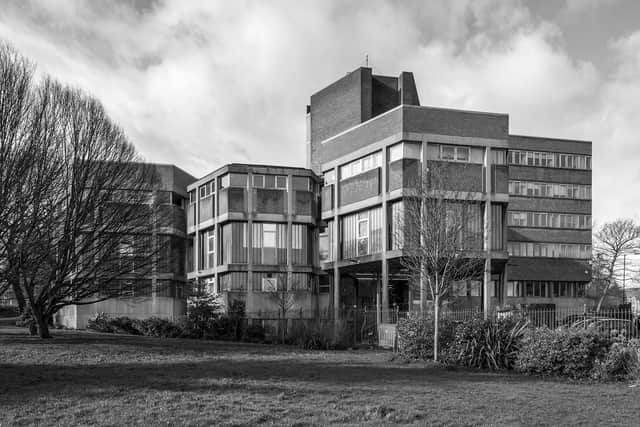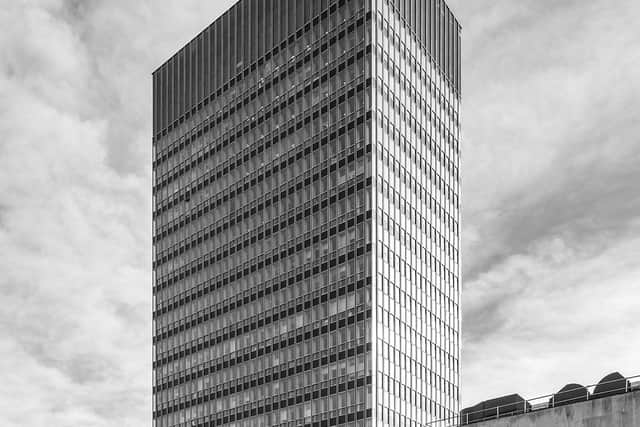Photographer's new book shows how Sheffield's classic modernist architecture puts city on the map
and live on Freeview channel 276
These post-war modernist buildings, many of which were attached to the Brutalist style of design, are characterised by their reliance on utilitarian concrete, steel and glass - all clean lines and geometric shapes, the structures put the focus on each place's primary function and were a world away from the ornate edifices of the Victorian era.
The monolithic Park Hill estate, the remarkable electricity substation on Moore Street, Sheffield University’s Arts Tower, the Crucible Theatre and St Paul’s Church in Parson Cross are among those that are listed for their heritage value. All five, plus other buildings in the city, are included in a new book of images by photographer Simon Phipps that is billed as the most extensive survey of its kind.
Advertisement
Hide AdAdvertisement
Hide AdBrutal North is the result of years of work by Phipps, and while its scope encompasses northern England as a whole, Sheffield looms large with 13 of its modernist landmarks featured in the volume.


"I'm very pleased to see it in print, it was a bit of a struggle to get there this year," says Phipps, who had to navigate the worsening pandemic and lockdown to finish the project with his publisher.
"There was no travel, and I didn't have all the photography completed. As things eased up I had to try and fit it in, travelling round the near-empty motorways of the North."
Each building in Brutal North is shot in stark monochrome and comes with a detailed listing explaining its origins. The citations highlight the fact that the majority of these architectural schemes were instigated by local authorities for civic purposes from the 1950s onwards - Phipps says this was a response to the 'devastation' wrought by Second World War bombs.
Advertisement
Hide AdAdvertisement
Hide Ad"There were obviously a lot of commissioning bodies, mostly councils, who were really grasping the nettle and taking on the need to create mass housing and civic buildings," he says. "I think it was taken very seriously, particularly in Sheffield. The city architects’ department under John Lewis Womersley commissioned massive amounts of building that's still very much in evidence today such as Park Hill and Gleadless Valley. I certainly think they've lasted the test of time. I've selected buildings that have a fairly reasonable profile but also unknown buildings, and fairly neglected ones that might be a surprise for people to discover."


The word ‘brutalism’ comes from the French béton-brut, literally meaning ‘raw concrete’ - this was a term used by Swiss-French architect Le Corbusier to explain his methods at the enormous Unité d'Habitation housing complex in Marseilles, France, completed in 1952. Reyner Banham, the British architectural critic, wrote an essay called The New Brutalism in 1955 which popularised the style, and in his foreword Phipps reflects on the movement's links to socialist ideals.
"Looking at the small list of achievements credited to the Northern Powerhouse since it was formed in 2015, it pales into insignificance in comparison to the north of the post-war years and the determination of its civic convictions and drive to create a proud and better society for all," he writes.
Park Hill was designed by Jack Lynn, Ivor Smith and Frederick Nicklin; built between 1958 and 1961 as an experiment in social housing, its famous 'streets in the sky' were wide enough to accommodate a milk float. Today the vast estate is undergoing a lengthy revamp, mostly with the aim of creating new apartments, of which only a limited proportion will be classed as 'affordable housing'.
Advertisement
Hide AdAdvertisement
Hide Ad"The vision of the welfare state has been somewhat diminished in recent decades by the Right to Buy policy, which started to erode this vision of public housing of which Park Hill was an exemplar," says Phipps. "I found it quite sad that this ambition that local government had has been crushed, and we're now reliant on private developers to bail out a lot of these schemes."


Park Hill, which had declined by the 1980s and gained a reputation as a crime hotspot, escaped the threat of being demolished when it became Europe's largest listed building in 1998, the year it was given Grade II status.
Does Phipps sympathise with those for whom Brutalism doesn't appeal?
"Not really, no," he says, laughing. "There's many periods of architecture I don't have a great liking for but to demolish it, for aesthetic dislike, is ridiculous. Cities are built up as a tapestry of historic styles - if you don't have that contrast, you lose something. The cityscape is built up through historical progress. From my point of view it's always good to retain what has value - that goes from the Victorian period up to now."
Advertisement
Hide AdAdvertisement
Hide AdPhipps was born in Leeds, but grew up in the south and studied sculpture at the Royal College of Art. His parents were both architects who worked at the Milton Keynes Development Corporation as the ambitious new city was being designed.


Brutal North follows on from his previous books Brutal London and Concrete Poetry. Having produced three titles on the subject, does Phipps feel he's exhausted the topic?
"No, I'll be back for more," he says decisively. "There's plenty, if not in this country but certainly worldwide. I'm quite keen to do something on Scotland some time in the near future, there's a lot of strong architecture up there that I'd love to compile into another volume."
Brutal North is out now, published by September and priced £16.99 in hardback. See www.simonphipps.co.uk for further details.